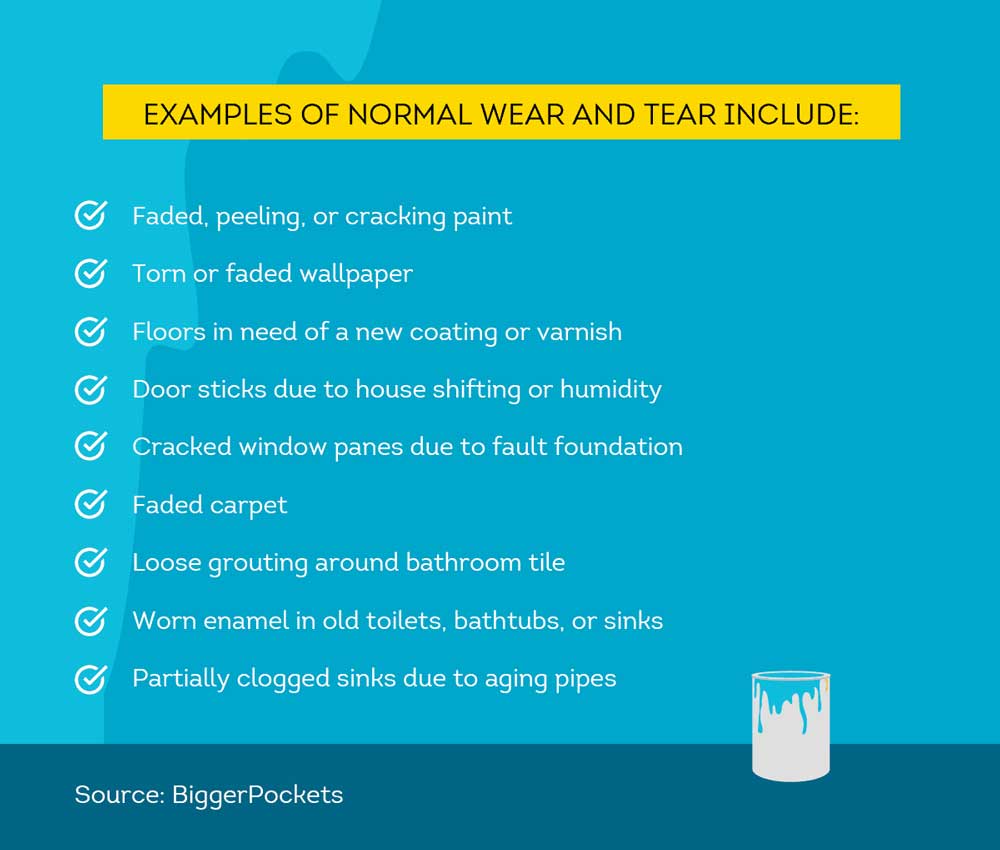
The bottom line is that wear and tear are subjective. The damage you’ll accept t your property will depend on the type of person you are, how long the tenants have been in residence, and what sort of people they are.
Of course, wear and tear can be defined and the terms should be defined when creating your rental contract. This will help to ensure there are no misunderstandings when a tenancy is reviewed or ended. After all, if you’re going to be refusing to return a deposit you’ll need to have the contract to back you up.
Your contract should specify how damage will be assessed. For example, large holes in the walls will be obvious visually. But, if you’re concerned about integrity you may want to have some areas tested with specialist equipment, using a process such as magnetic particle testing.
To help you establish the boundaries, the following items are generally accepted as wear and tear:
Table of Contents
Faded Paint:
Paint naturally fades over time, especially when exposed to sunlight. This isn’t a result of anything the tenant has done. In fact, if it has been a long time since the place was painted it could even be cracking and flaking.
Light Scratches:
Light scratches on the floors and even the wooden furniture are virtually inevitable with daily use. The scratches can come from grit on shoes and sliding glass on a table. These are acceptable. Deep gouges suggest neglect that is not worn and tear.

Aged Soft Furnishings:
Just as paint fades in the sun so do soft furnishings. It’s virtually inevitable that they will start to look tired after several years in the house. This applies to any of the soft furnishings you supply, including carpets that are worn through daily use.
Sticking Doors:
Doors that have been pulled off hinges are damaged. But, if they are hanging slightly wonky or have swollen due to humidity then this is normal wear and tear, you’ll have to resolve the issue.
Loose Grouting:
Tiles in bathrooms and kitchens should be kept clean by tenants but the grouting may have worked loose over time. This is normal wear and tear and should be treated as such.
Clogging In The Pipes:
It’s natural for clogs to build inside the drainage pipes, especially if they haven’t been cleaned for a long time. You can expect this and should consider its wear and tear. Although it is less likely if the correct products are put down the drain and not toys or sanitary products.
The Bottom Line:
If you walk around your rental home and think about which items you would have replaced if you lived there, then you’re on the right track. If you were on the property you would treat it with respect but light damage and faded would still occur. Those issues would be resolved but that’s not the responsibility of the tenant. So, if the damage in the property reflects what t would look like if you live there, it’s wear and tear. If not, you can consider its damage and deal with it accordingly.


















Be the first to write a comment.